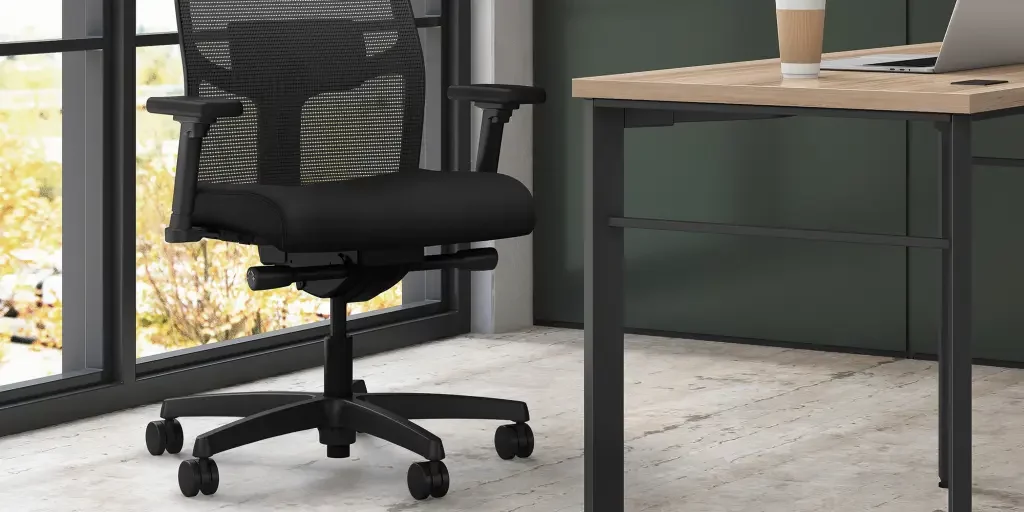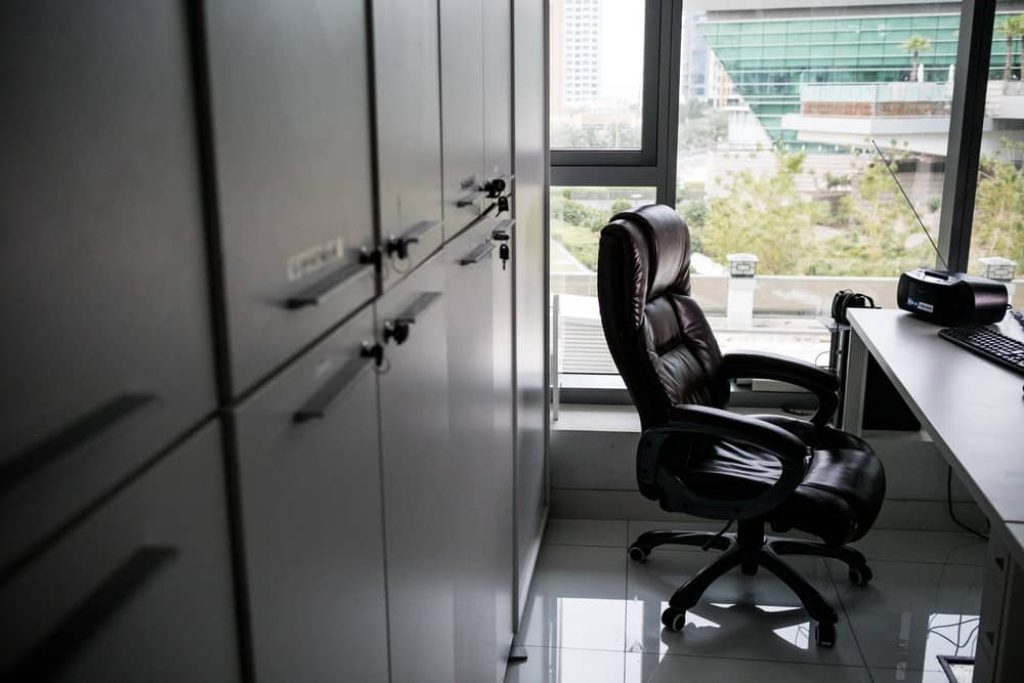In today’s professional environment, office chairs serve as a fundamental part of the workspace. The office chair is more than just a place to sit; it can influence productivity levels, overall comfort, and, most importantly, the health and well-being of the user. With many of us spending approximately eight hours a day seated while working, the importance of a good office chair can’t be overstated.
Choosing the right chair isn’t just about comfort; it’s also about durability and longevity. The common lifespan of an office chair can vary based on multiple factors, including the quality of the chair, the frequency of use, and how well it is maintained. However, on average, you can expect a well-built and well-maintained office chair to last between seven to ten years.
Understanding the general lifespan of office chairs can help in budgeting for replacements and can serve as a useful benchmark to evaluate if you’re getting the most out of your chair. It’s essential to recognize when it’s time to bid farewell to your trusty seat and invest in a new one for the sake of your comfort, productivity, and health. This guide will delve deeper into how long do office chairs last, the life expectancy of different types of office chairs, signs your chair may need replacing, and tips on how to extend the lifespan of your chair.

The Lifespan of Office Chairs

The lifespan of a typical office chair can be quite varied. However, on average, a good-quality office chair that is used daily and properly maintained should last between seven to ten years. This is based on an assumption of 40 hours of use per week, which is the standard for a full-time office job. Keep in mind, this is an approximation; some chairs may last much longer, while others may begin showing signs of wear and tear sooner.
Factors Affecting the Lifespan of an Office Chair
- Quality of Construction: Not all office chairs are made equal. The lifespan of your chair will greatly depend on the quality of its construction. A chair made with high-quality materials and superior craftsmanship will generally last longer. This includes elements such as the frame, the type of upholstery, the mechanisms, and even the type of foam used in the cushioning.
- Frequency of Use: How often and how long you use your chair can also impact its longevity. A chair used for a standard 40-hour work week will likely wear out faster than a chair used less frequently. Chairs used in 24/7 multi-shift environments, like call centers, will likely have a significantly shorter lifespan due to constant use.
- User Weight: Office chairs are often rated for certain weight capacities. Consistently using a chair above its weight rating can put excessive strain on the chair’s components, reducing its overall lifespan. Even within weight limits, heavier use will often result in faster wear and tear.
- Maintenance and Care: Regular maintenance and care are crucial to keeping your office chair in good shape for as long as possible. This includes regular cleaning, occasionally tightening any loose screws or bolts, lubricating moving parts if necessary, and promptly addressing any repair needs, like replacing a broken wheel.
In conclusion, while the average lifespan of an office chair is a useful guide, remember that it’s the above factors that will most greatly determine how long your specific chair will last.
Types of Office Chairs and Their Lifespans
Task Chairs: Task chairs are the most common type of office chair. They are designed for daily use and general office tasks, featuring adjustable settings for height and tilt. With regular use and proper care, these chairs can last up to seven years on average.
Executive Chairs: Executive chairs are often more plush and offer more adjustments than task chairs. They’re designed with aesthetics and comfort in mind, usually constructed with higher-end materials. These chairs can last up to 10 years or even longer, depending on the level of care and the quality of the chair.
Mesh Chairs: Mesh chairs are popular for their breathability, which is especially beneficial in warmer climates or for those who sit for extended periods. The mesh fabric, however, can stretch or tear over time. With proper care, mesh chairs can have a lifespan similar to that of task chairs, generally around seven years.

Leather Chairs: Leather chairs are durable and offer a classic look. The lifespan of a leather chair will depend largely on the type of leather used and how well it is maintained, as leather can crack or fade without proper care. High-quality leather chairs can last well over a decade, while faux leather options might start to show wear after five to seven years.
Ergonomic Chairs: Ergonomic chairs are designed to provide optimal comfort and to promote good posture. They often include adjustable features like seat depth, lumbar support, and armrest positioning. Given their design for health and comfort, these chairs are often built to high-quality standards and, with good care, can last up to 10 years.
Comparison of Each Chair’s Average Lifespan: While the above estimates provide a general guide, it’s important to remember that the lifespan of any chair will depend greatly on its construction, usage, and maintenance. Task and mesh chairs typically last around seven years, while executive and ergonomic chairs can last up to 10 years or more. Leather chairs have the potential to last the longest, particularly if they’re made of high-quality leather and receive proper care, potentially lasting well over a decade. However, faux leather options may have a shorter lifespan, similar to that of task chairs.
Remember that these are averages, and a well-cared-for chair of any type can potentially exceed these lifespan expectations.
Signs Your Office Chair Needs Replacement
Physical Wear and Tear Signs
Wear and tear are normal for any frequently used item, and office chairs are no exception. Signs of physical deterioration may suggest that your chair is reaching the end of its lifespan. These signs could include torn upholstery, which can occur over time with regular use, especially on less durable materials. Other signs might be wobbly or broken wheels, which can make moving the chair difficult and annoying. If you see cracks in the chair frame or visible damage to the adjustment levers, it’s likely time for a replacement.
Functional Issues
Functional issues are another key indicator that your chair might need to be replaced. One common issue is with the hydraulic lift, which allows you to adjust the height of your chair. If the chair sinks down shortly after you’ve raised it or won’t adjust in height at all, the hydraulic lift is probably failing. Another functional problem might be instability, such as the chair tipping over easily or the backrest failing to stay in a set position. These issues can make the chair unsafe to use.
Comfort and Ergonomic-Related Signs
Even if your chair appears to be in good physical condition, issues related to comfort and ergonomics can also signal that it’s time for a replacement. If you’re experiencing persistent discomfort when sitting, it may be due to the padding in your chair seat or backrest wearing thin, which can lead to less support and increased discomfort over time.
Moreover, if you find yourself struggling to maintain good posture when seated, or if you’re developing aches and pains after working, it could be a sign that your chair is no longer providing the correct ergonomic support. This could be due to wear and tear, or it might suggest that the chair was never a good fit for your body type and work style to begin with.
It’s important to pay attention to both the physical condition of your chair and your own comfort and safety. If your office chair shows signs of severe wear, doesn’t function properly, or causes discomfort, it’s probably time to start shopping for a new one.
How to Extend the Lifespan of Your Office Chair
Proper care and maintenance can significantly extend the lifespan of your office chair. Here are some key strategies that can help maximize the longevity of your chair:
Proper Use and Handling
Proper use of your office chair can play a significant role in how long it lasts. Avoid standing on the chair or using it as a step ladder. It’s also important not to lean back too far in chairs that aren’t designed for reclining, as this can put undue stress on the backrest. Always lift the chair to move it rather than dragging it, which can damage the wheels or casters.
Regular Maintenance
- Cleaning and Dusting: Regular cleaning can help keep your chair looking good and working well. For upholstery, use a suitable fabric cleaner or a leather conditioner for leather chairs. Always follow the manufacturer’s cleaning instructions. Regularly dust the chair, paying particular attention to the wheels and any moving parts, to prevent dust build-up, which can affect the chair’s functionality.
- Lubricating Moving Parts: If your chair squeaks or if the wheels or other moving parts aren’t moving smoothly, it might be time for some lubrication. Use a light oil or a product specifically designed for office chairs, but always follow the manufacturer’s guidelines.
Making Minor Repairs
Address minor repairs promptly to prevent them from turning into major issues. For example, if a caster (wheel) is broken, replace it immediately. Similarly, if screws or bolts become loose, tighten them to prevent further damage. Many minor repairs are easy DIY fixes that can prolong the life of your chair.
Importance of Proper Ergonomic Adjustments for Longevity
Proper ergonomic adjustment is crucial not only for your comfort and health but also for the longevity of your chair. Make sure to adjust your chair to suit your body size and workstation layout. Regularly check that the height, backrest angle, and armrest position still suit your needs, as these can shift over time. An appropriately adjusted chair distributes your weight evenly, reducing wear and tear on any one part of the chair.
By practicing proper use and handling, carrying out regular maintenance, making minor repairs promptly, and ensuring your chair is ergonomically adjusted, you can greatly extend the life of your office chair and get the most out of your investment.
When to Invest in a New Chair
Knowing when to invest in a new office chair can be a game-changer for your productivity, comfort, and overall health. Here are a few considerations to help you make the decision:
Considering the Cost of Repair vs. Replacement
If your chair is showing signs of wear and tear or is no longer comfortable, the first thing to consider is whether it’s worth repairing or if it would be more cost-effective to replace it entirely. Evaluate the cost of needed repairs, including parts and labor if you’re not planning a DIY fix. If the repair cost approaches or exceeds half the price of a similar new chair, investing in a new chair might be the better option.
Understanding the Impacts of Using an Old Chair on Productivity and Health
An uncomfortable chair or one that doesn’t provide sufficient ergonomic support can negatively impact your productivity and health. Chronic discomfort can be distracting, reducing your focus and efficiency. More seriously, a chair that doesn’t support good posture can contribute to musculoskeletal problems over time. If you’re experiencing persistent discomfort, fatigue, or aches and pains that seem related to your chair, it’s likely time for a replacement.
Insights on the Best Time to Buy a New Chair (Sales, Discounts, etc.)
Timing your purchase can help you get the best deal on your new office chair. End-of-year sales, particularly around Black Friday and Cyber Monday, often offer significant discounts. Many retailers also have sales at the end of the fiscal quarter. Subscribing to newsletters from office furniture retailers can help you stay informed about upcoming sales and promotions.
In conclusion, when deciding whether it’s time to invest in a new chair, consider the cost of repairs, the impact of your current chair on your productivity and health, and potential savings from sales or discounts. Remember, a good office chair is an investment in your comfort, productivity, and health, and sometimes, a new chair is the best choice.
Conclusion
The lifespan of an office chair is influenced by many factors including the quality of its construction, the frequency and manner of use, the weight of the user, and the level of maintenance and care it receives. While the average lifespan of a well-made office chair falls around seven to ten years, this can vary significantly depending on the type of chair and the conditions of its use.
Throughout this guide, we’ve highlighted the importance of maintaining your office chair, not only for the sake of extending its lifespan but also for your comfort, productivity, and health. From recognizing the signs that your chair may need to be replaced, to understanding how to properly care for and repair your chair, it’s clear that the more attention you give to your office chair, the longer it’s likely to last.
When it comes to investing in a new chair, it’s crucial to weigh the costs of repair versus replacement, the impact of your current chair on your productivity and health, and the potential savings from timing your purchase wisely. Remember, the longevity of your office chair directly impacts your work life.
So next time you sit down on your office chair or plan to purchase a new one, keep these points in mind. By doing so, you’ll not only ensure a longer lifespan for your chair but also create a better, healthier workspace for yourself.







